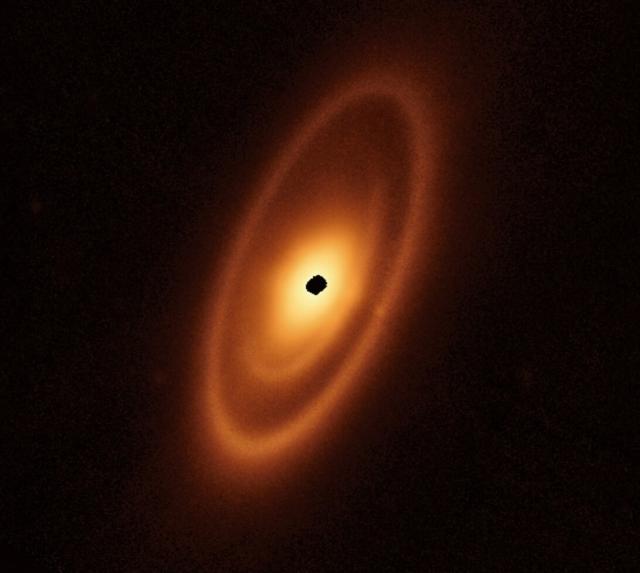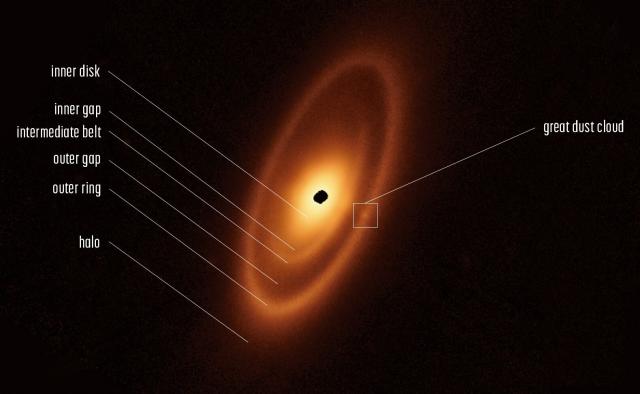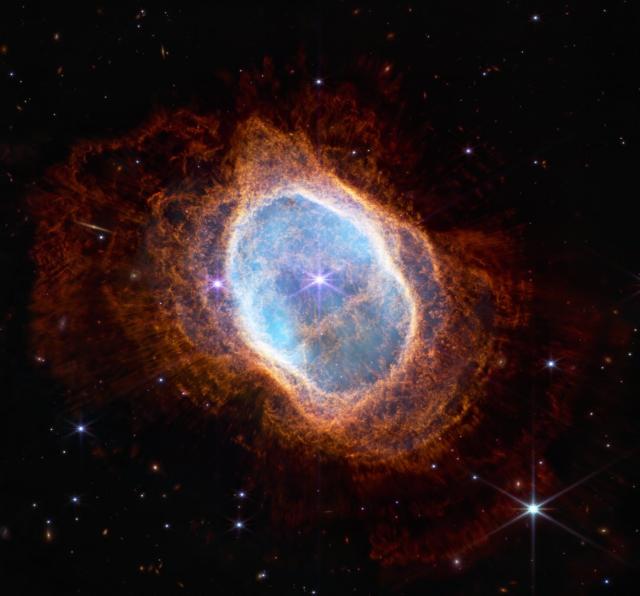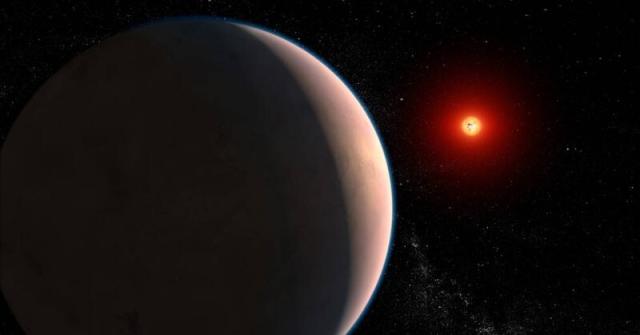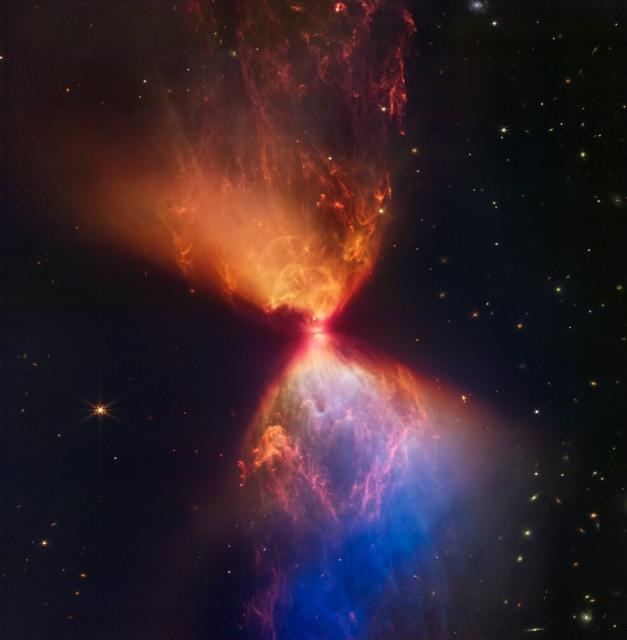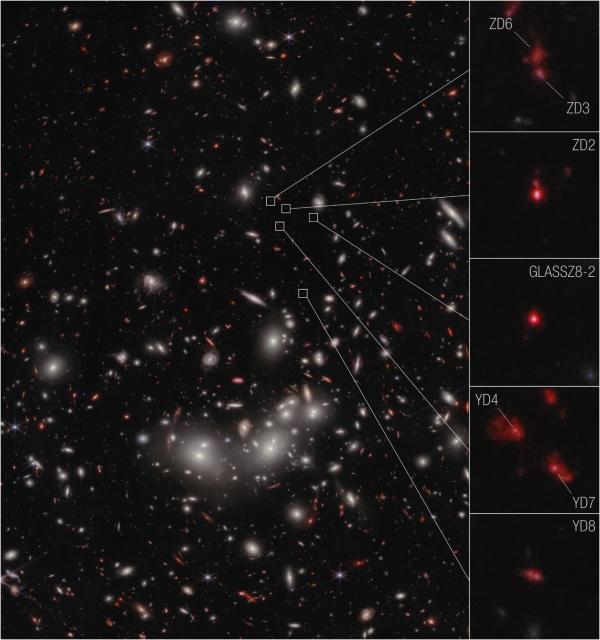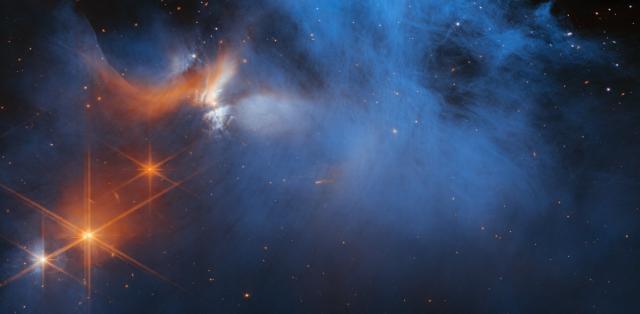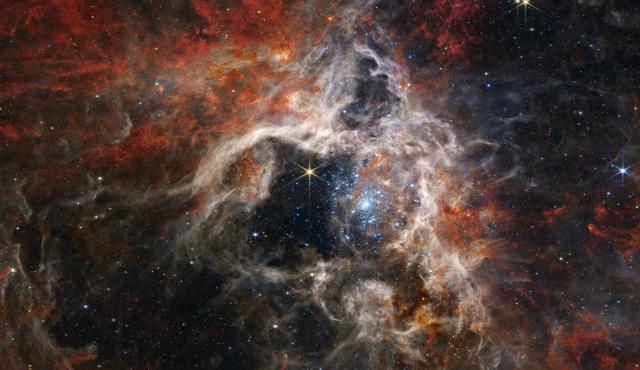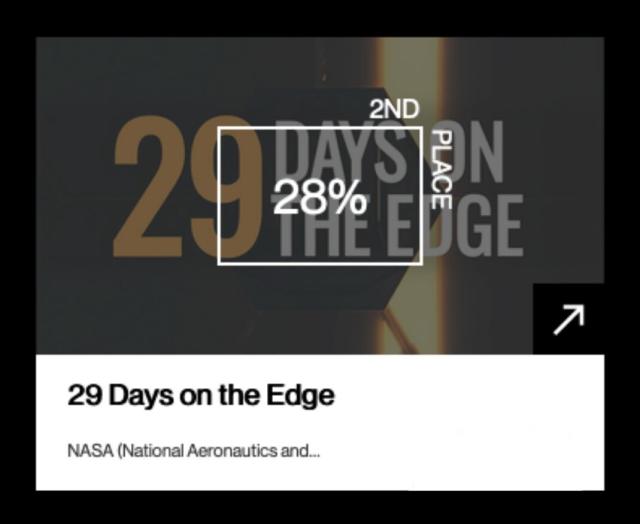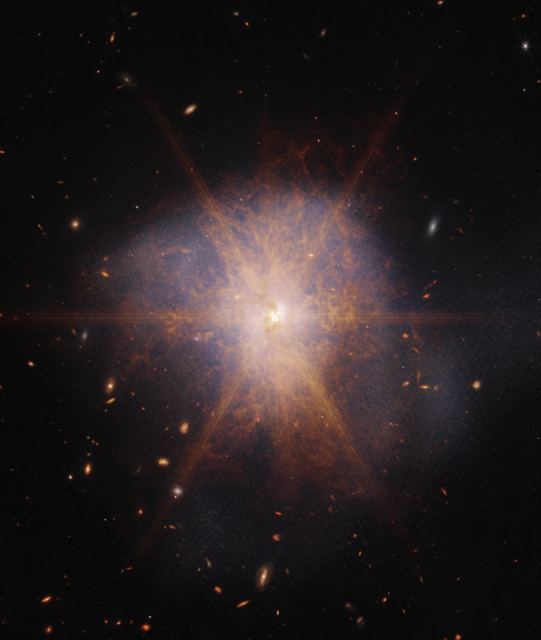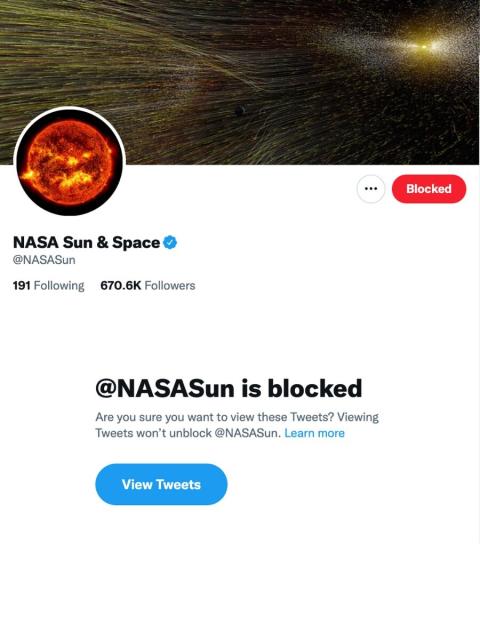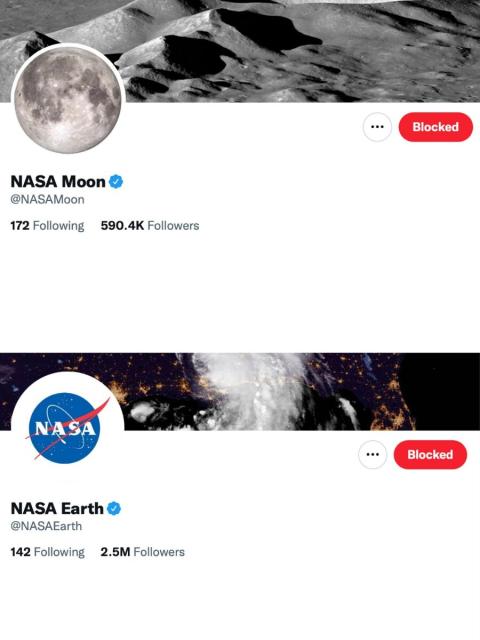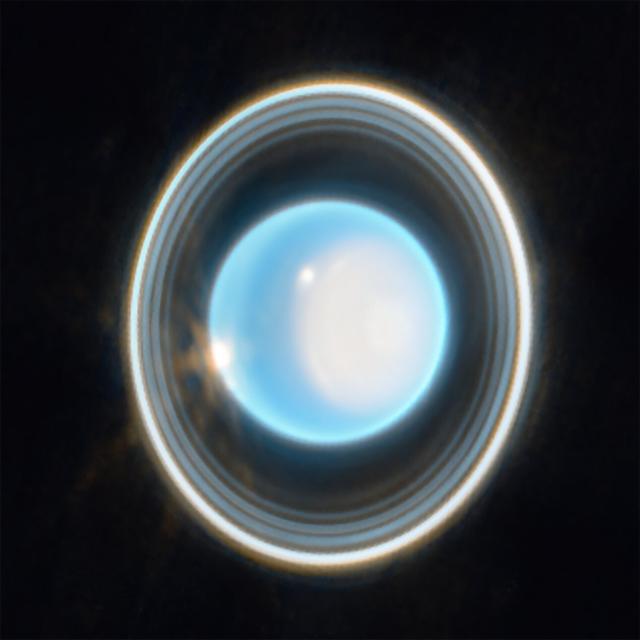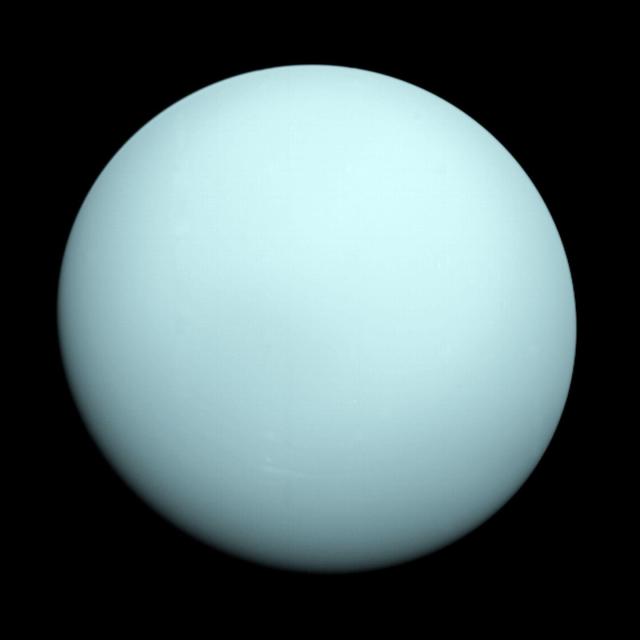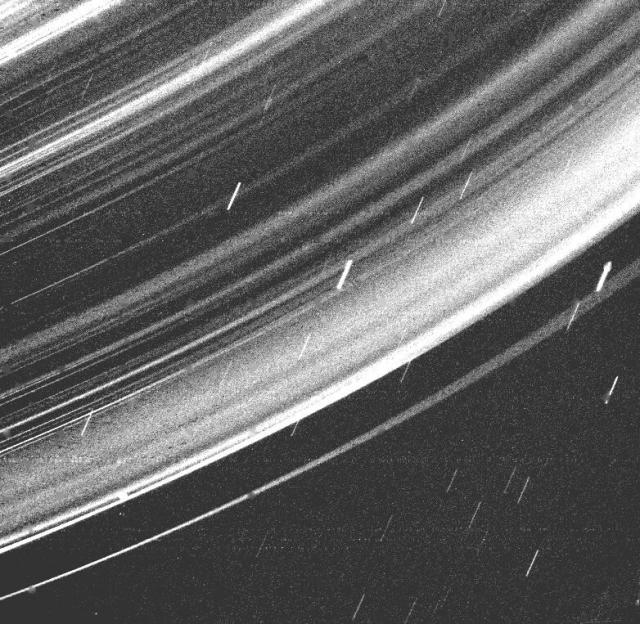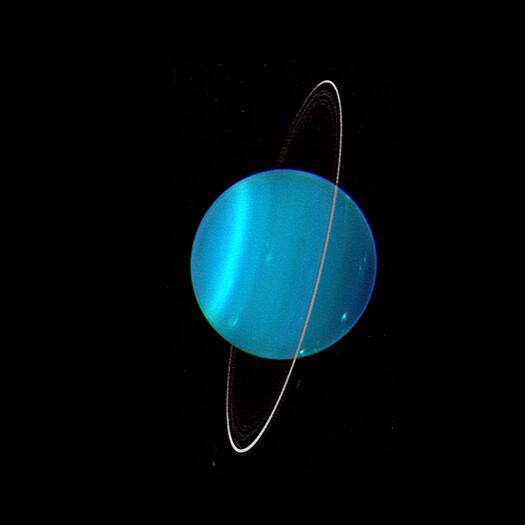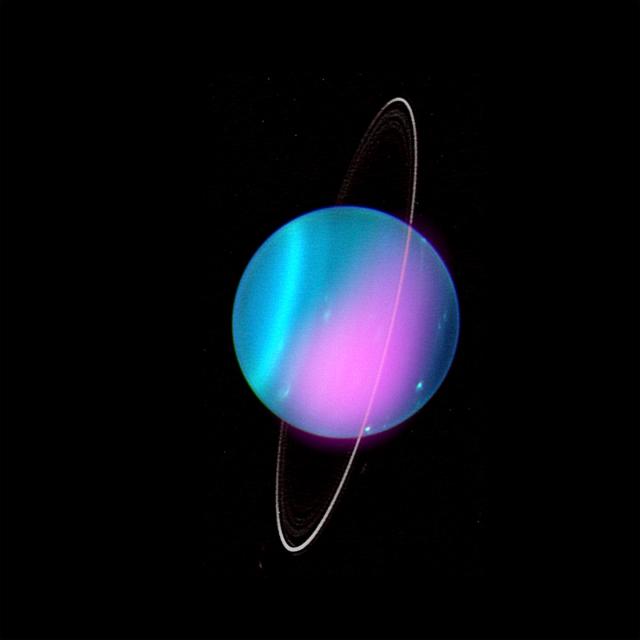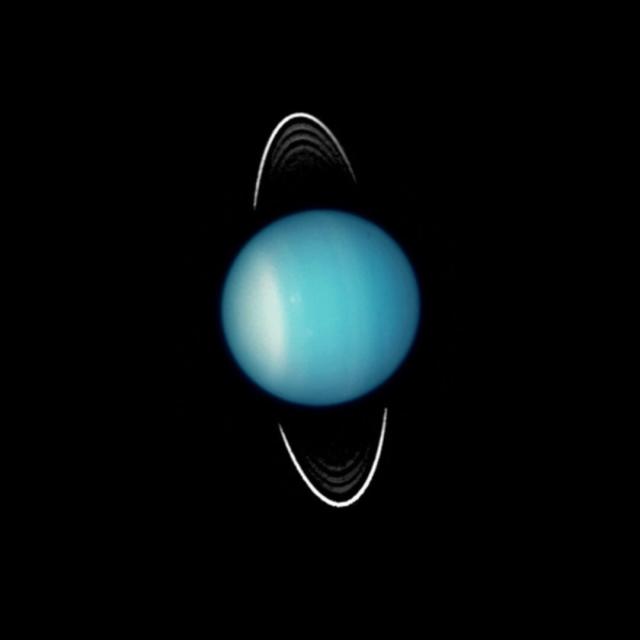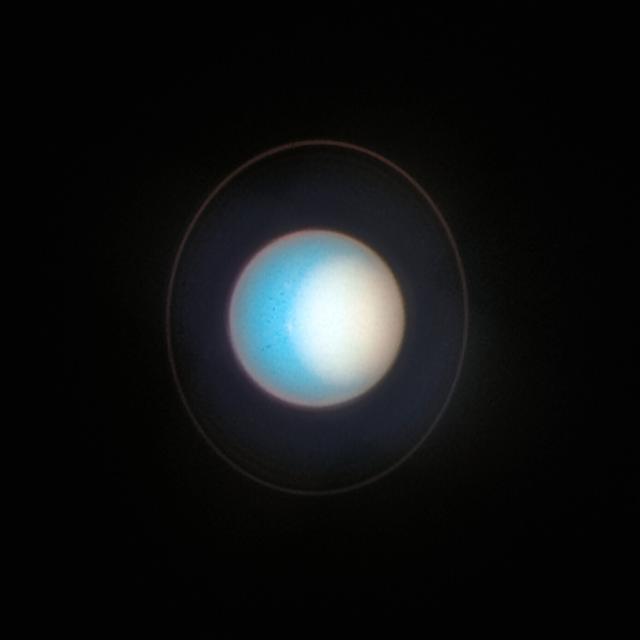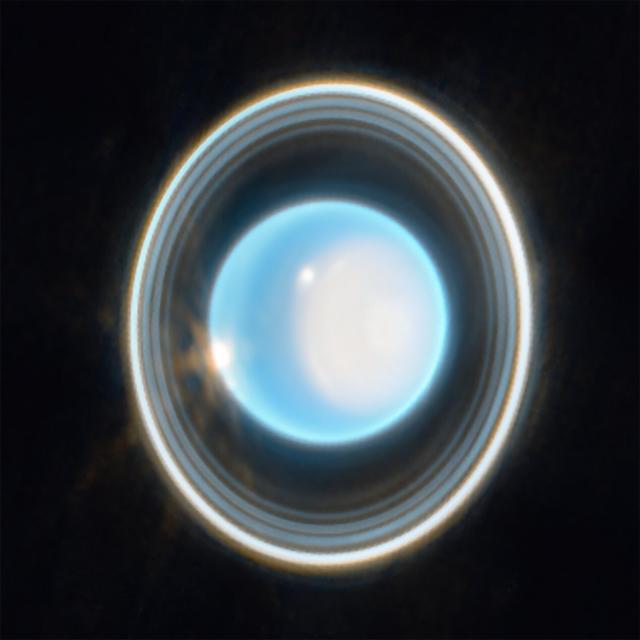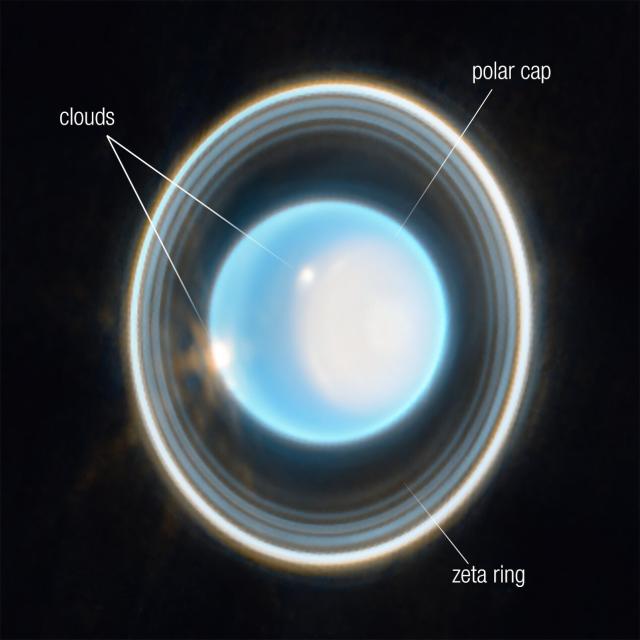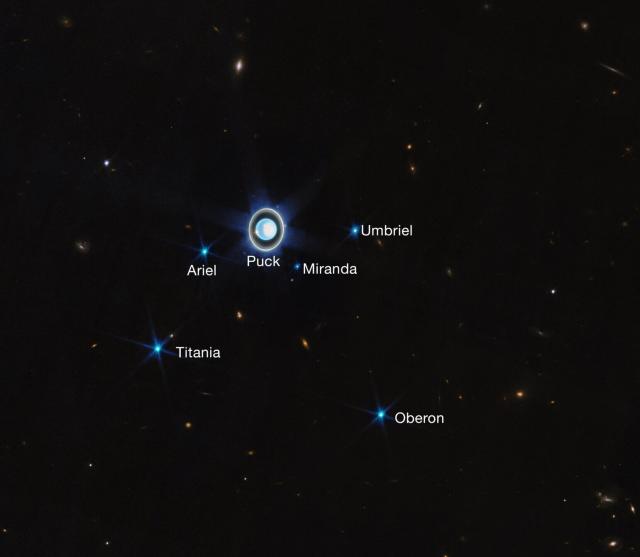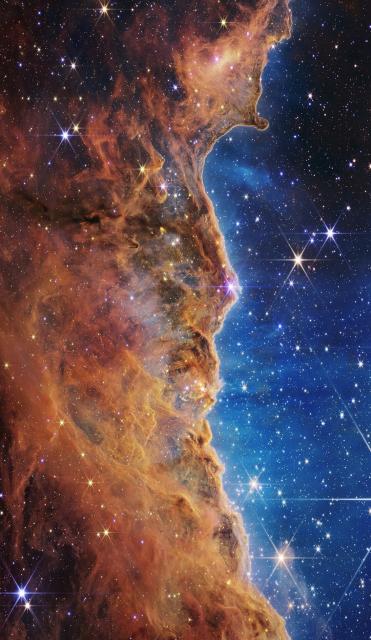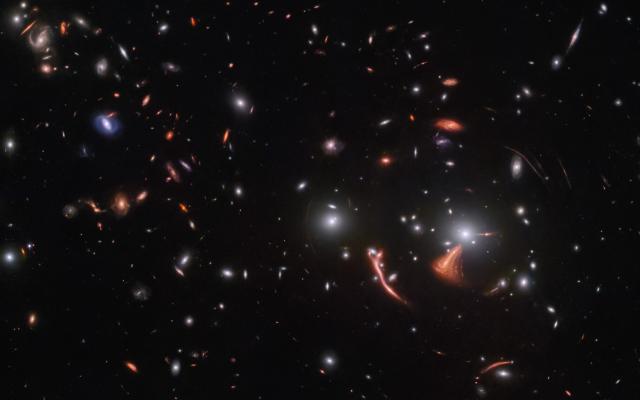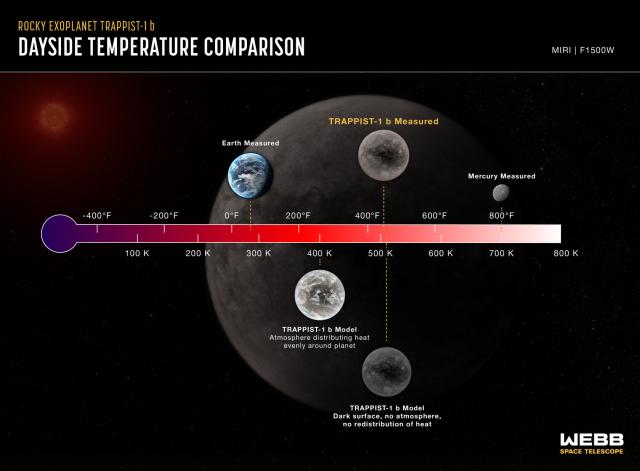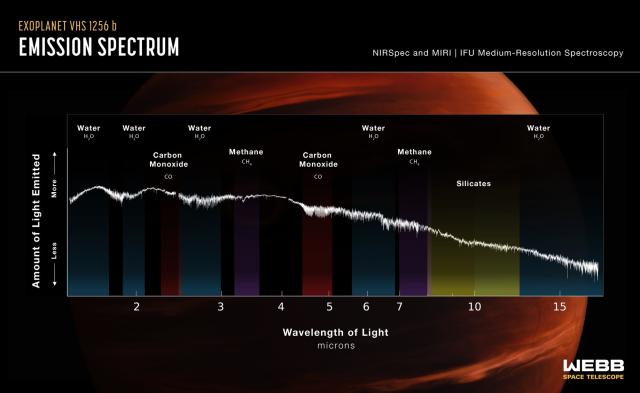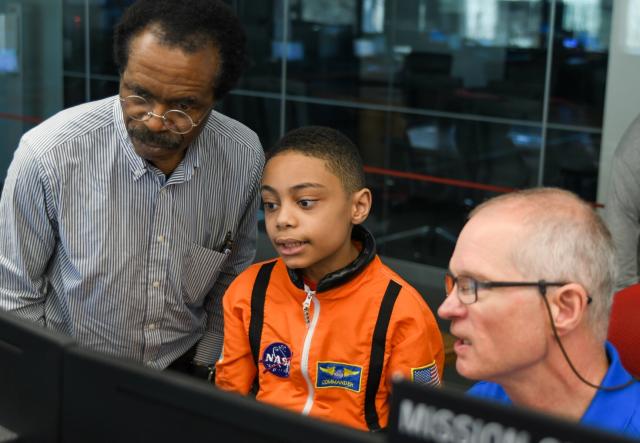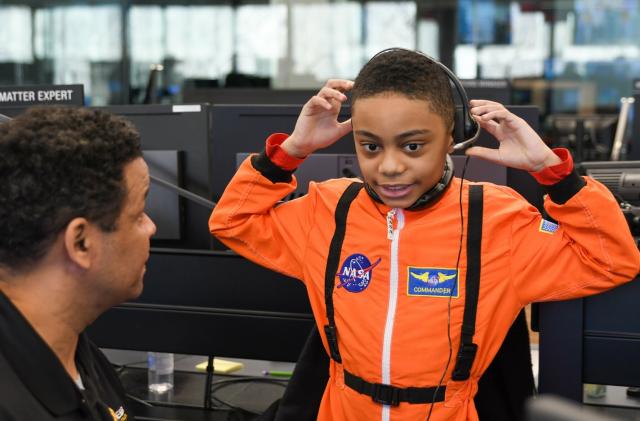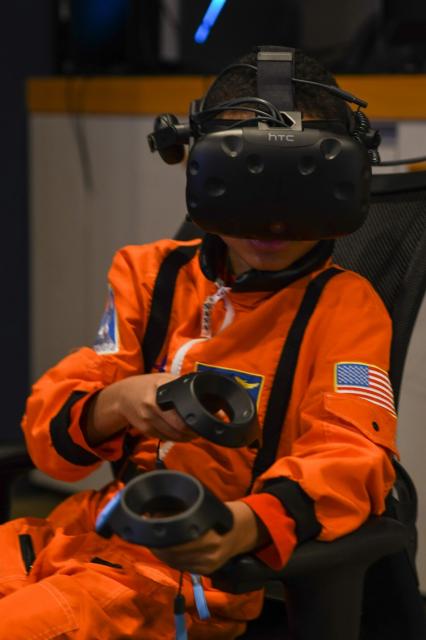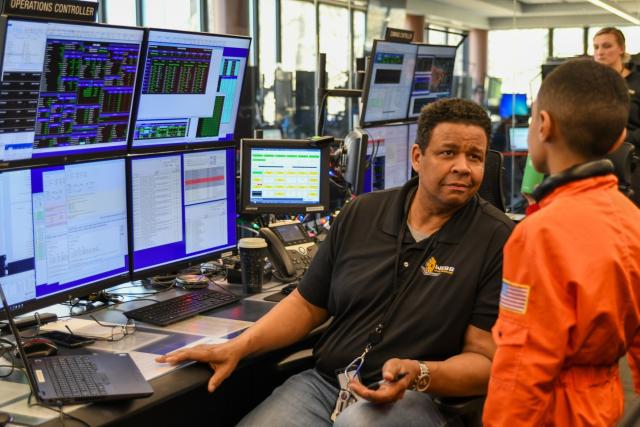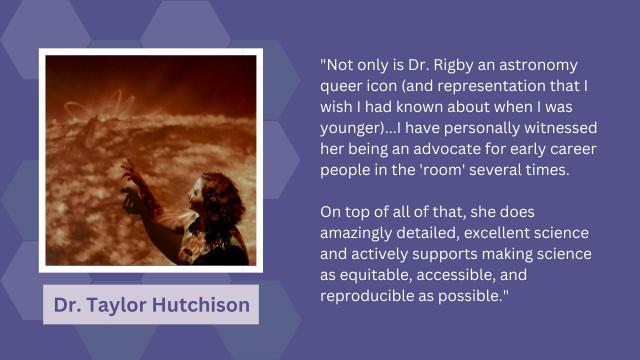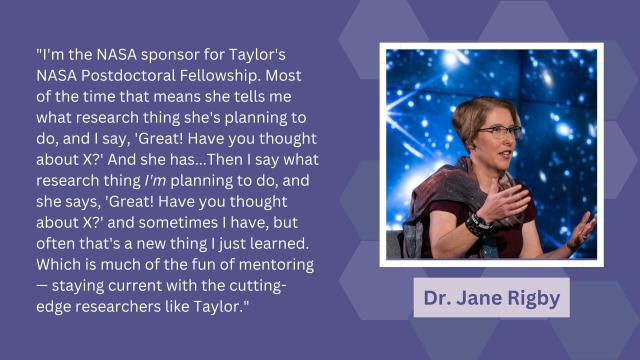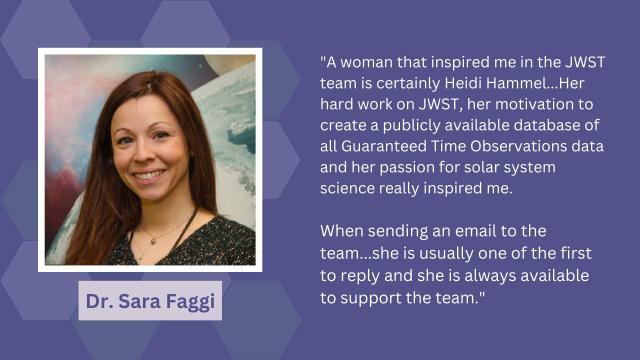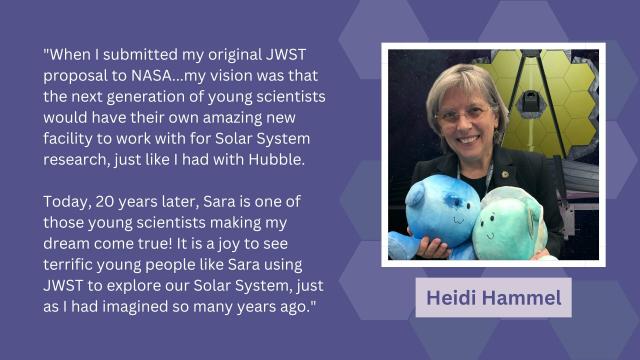Search
Items tagged with: jameswebb
#JamesWebb
Webb has a new achievement under its (asteroid) belt!
This image is our first infrared look at an asteroid belt outside our solar system. Webb reveals there are actually 3 belts, including 2 never-before-seen inner belts, around the star of Fomalhaut: go.nasa.gov/42dH7h6
#JamesWebb
Webb Looks for Fomalhaut’s Asteroid Belt and Finds Much More
Astronomers used NASA’s James Webb Space Telescope to image the warm dust around a nearby young star, Fomalhaut, in order to study the first asteroid belt ever seen outside of our solar system in infrared light.Jamie Adkins (NASA)
#JamesWebb
Thank you, teachers! 🍎
This #TeacherAppreciationWeek, join us for a #NASAScience virtual event series designed with classrooms in mind — including 2 live talks on Webb’s recent science discoveries: go.nasa.gov/3p8Qb8h
#JamesWebb
In Appreciation of Educators, NASA Presents Digital Learning Week
NASA’s Science Activation Program invites learners of all ages, including students and educators, to join our Digital Learning Week Celebration.Tricia Talbert (NASA)
Webb's on the case 🔎
Webb found hints of water vapor while studying rocky exoplanet GJ 486 b. Scientists are puzzled whether this could be due to spots on its star, or if this could indicate the 1st atmosphere definitively detected around a rocky world: go.nasa.gov/41K2Ahj
#JamesWebb
Webb Finds Water Vapor, But From a Rocky Planet or Its Star?
Astronomers used NASA’s James Webb Space Telescope to study a rocky exoplanet known as GJ 486 b, and their observations using Webb’s Near-Infrared Spectrograph (NIRSpec) show hints of water vapor.Jessica Evans (NASA)
You did it, folks. Thanks to you, we put the Webb in #Webbys!
Our #UnfoldTheUniverse campaign and livestream series have netted us 2 People’s Voice awards. Congrats to all of @nasa’s Webby winners: go.nasa.gov/40Gxyph
#JamesWebb
Best of the Internet: NASA Wins Webby Award, 5 People’s Voice Awards
NASA has earned one Webby award and five People’s Voice awards in the 27th annual Webby Awards Competition, recognizing excellence in online communications.Dacia Massengill (NASA)
This is shaping up to be a giant cluster…of galaxies.
These 7 spotlighted galaxies form a protocluster so far away, its light took ~13 billion years to reach us. Webb scientists predict it may grow into one of the largest, densest galaxy clusters known: go.nasa.gov/3V5UEnZ
#JamesWebb
Webb Reveals Early-Universe Prequel to Huge Galaxy Cluster
NASAs James Webb Space Telescope has confirmed, for the first time, a protocluster of seven galaxies at a distance that astronomers refer to as redshift 7.9, or a mere 650 million years after the big bang.Isabelle Yan (NASA)
Webb Telescope. #Webbys Award. It just makes sense. Last chance to vote for us in the Webb(y)s! ⬇️
General Video: Technology- wbby.co/31914N
Social Campaigns: Education & Discovery- wbby.co/31856N
Social Video: Events & Livestreaming- wbby.co/31871N
#JamesWebb
Vote for the best of the internet
I just voted in The Webby People's Voice Awards and checked my voter registration.wbby.co
Happy birthday, TESS! 🥳
We’re excited to keep working together with you to further exoplanet science 🪐
#JamesWebb
If you loved our nail-biting video of Webb's million-mile journey, "29 Days on the Edge"... youtu.be/uUAvXYW5bmI
...help get us over the edge with 29% of the vote! We’re 1 point away from the current leader in the #Webbys for General Video: Technology: wbby.co/31914N
#JamesWebb
29 Days on the Edge
The greatest origin story of all unfolds with the James Webb Space Telescope. Webb's launch is a pivotal moment that exemplifies the dedication, innovation, ...YouTube
hey girl, are you an ULIRG? because you shine brighter than a trillion suns ✨
Arp 220 is an ultra-luminous infrared galaxy (ULIRG) that emits 300 times more light than the Milky Way. It also happens to glow brightest in infrared light, Webb's specialty: go.nasa.gov/3oef1TD
#JamesWebb
Webb Captures the Spectacular Galactic Merger Arp 220
Shining like a brilliant beacon amidst a sea of galaxies, Arp 220 lights up the night sky in this view from NASA’s James Webb Space Telescope.Isabelle Yan (NASA)
To communicate science, sometimes you gotta throw a little shade...
Fan of moments like this? Consider voting for us in the #Webbys! "NASA's James Webb Space Telescope Unfolds the Universe" is nominated in Social Campaigns: Education & Discovery. wbby.co/31856N
#JamesWebb
Vote for the best of the internet
I just voted in The Webby People's Voice Awards and checked my voter registration.wbby.co
Stars: always making a dramatic exit! 🌟
Webb’s powerful infrared eye has captured never-before-seen detail of Cassiopeia A (Cas A). 11,000 light-years away, it is the remnant of a massive star that exploded about 340 years ago: go.nasa.gov/3ZJnk72
#JamesWebb
Webb Reveals Never-Before-Seen Details in Cassiopeia A
A new mid-infrared image from NASA’s James Webb Space Telescope shows the supernova remnant Cassiopeia A (Cas A), created by a stellar explosion 340 years ago. Cas A is the youngest known remnant from an exploding, massive star in our galaxy.Isabelle Yan (NASA)
#JamesWebb
#JamesWebb
#JamesWebb
#JamesWebb
#JamesWebb
Uranus has never looked better. Really.
Only Voyager 2 and Keck (with adaptive optics) have imaged the planet's faintest rings before, and never as clearly as Webb’s first glimpse at this ice giant, which also highlights bright atmospheric features. go.nasa.gov/3nTo3oO
#JamesWebb
NASA’s Webb Scores Another Ringed World With New Image of Uranus
Following in the footsteps of the Neptune image released in 2022, NASA’s James Webb Space Telescope has taken a stunning image of the solar system’s other ice giant, the planet Uranus.Jamie Adkins (NASA)
#JamesWebb
#JamesWebb
Help us put the Webb in #Webbys!
For @TheWebbyAwards this year, our team is nominated for 3 social media and video awards thanks to stellar explorers like you ✨
Vote here for our #UnfoldTheUniverse social media campaign: wbby.co/31856N
#JamesWebb
Vote for the best of the internet
I just voted in The Webby People's Voice Awards and checked my voter registration.wbby.co
Relive the heart-pounding preview of Webb’s 29-day unfolding in space…
👉 Vote here: wbby.co/31914N
#JamesWebb
Vote for the best of the internet
I just voted in The Webby People's Voice Awards and checked my voter registration.wbby.co
…And recall when we took you along with us on that journey with livestreams of key moments — across Facebook, Twitter, YouTube, Twitch and more! Watch: youtube.com/playlist?list=PLcy…
👉 Vote here: wbby.co/31871N
#JamesWebb
Webb Telescope Launch to First Images Release Live Stream Series
This series brought milestone Webb Telescope mission events to the world, live. NASA Astrophysicist, Michelle Thaller is your guide as NASA, ESA and CSA engi...YouTube
Warped tour…of space? ✨
See those strange arcs and streaks in this new Webb image? They’re actually distant galaxies, magnified and warped due to an effect called gravitational lensing: esawebb.org/images/potm2303a/
#JamesWebb
TRAPPIST-1 b: We give it a one (M-dwarf) star review; it lacks atmosphere. ⭐
Webb found the dayside temperature of this rocky exoplanet to be about 450º F (227º C) — suggesting it has no significant atmosphere: go.nasa.gov/3K9cS4g
Here’s why this is a big deal ⬇️
#JamesWebb

NASA’s Webb Measures the Temperature of a Rocky Exoplanet
An international team of researchers has used NASA’s James Webb Space Telescope to measure the temperature of the rocky exoplanet TRAPPIST-1 b.Jessica Evans (NASA)
#JamesWebb
#JamesWebb
#JamesWebb
Vibration Testing of NASA's James Webb Space Telescope
Inside NASA's Goddard Space Flight Center in Greenbelt, Maryland, the James Webb Space Telescope team completed the environmental portion of vibration testin...YouTube
#JamesWebb
NASA’s Webb Spots Swirling, Gritty Clouds on Remote Planet
Researchers observing with NASA’s James Webb Space Telescope have pinpointed silicate cloud features in a distant planet’s atmosphere.Isabelle Yan (NASA)
#JamesWebb
NASA’s Webb Spots Swirling, Gritty Clouds on Remote Planet
Researchers observing with NASA’s James Webb Space Telescope have pinpointed silicate cloud features in a distant planet’s atmosphere.Isabelle Yan (NASA)
#JamesWebb

Webb Telescope Team Honored with Robert H. Goddard Memorial Trophy
The team behind NASA’s James Webb Space Telescope received the 2023 Robert H. Goddard Memorial Trophy at the National Space Club’s yearly Dr. Robert H. Goddard Memorial Dinner in Washington on March 10.Jessica Evans (NASA)
#JamesWebb
Dr. Taylor Hutchison is an astrophysicist and NASA postdoctoral fellow. She focuses on studying extremely distant galaxies, and is working with Webb data as part of several collaborative science programs.
Read more about Dr. Hutchison: go.nasa.gov/42irRjw
#JamesWebb
Early Career Scientist Spotlight - Taylor Hutchison
The Sciences and Exploration Directorate is the largest Earth and space science research organization in the world.go.nasa.gov
Dr. Jane Rigby is an astrophysicist, Webb’s Operations Project Scientist and Dr. Hutchison's fellowship mentor. She uses Webb and other telescopes to study how galaxies and the black holes at their centers evolve over time.
More on Dr. Rigby: go.nasa.gov/3mW57Wl
#JamesWebb
Jane Rigby Biography Webb Telescope/NASA
The James Webb Space Telescope (sometimes called Webb or JWST) is a large infrared telescope with a 6.5-meter primary mirror. Webb will be the premier observatory of the next decade, serving thousands of astronomers worldwide.go.nasa.gov
There is beauty in transience. 🌸
Webb’s stunning image of a super bright, massive Wolf-Rayet star calls forth the ephemeral nature of cherry blossoms. The Wolf-Rayet phase is a fleeting stage that only some stars go through, soon before they explode: go.nasa.gov/3Ln74VC
#JamesWebb
NASA’s Webb Telescope Captures Rarely Seen Prelude to Supernova
The rare sight of a Wolf-Rayet star – among the most luminous, most massive, and most briefly detectable stars known – was one of the first observations made by NASA’s James Webb Space Telescope in June 2022.Jamie Adkins (NASA)
#JamesWebb
Webb Events to Take Place at South by Southwest, in Greater Austin
Scientists from NASA’s James Webb Space Telescope, also called “Webb” or “JWST,” will participate in panels at the 2023 South by Southwest (SXSW) Conference & Festivals, as well as two local events, from March 12-16 in Austin, Texas.Jamie Adkins (NASA)
#JamesWebb
Happy #WomensHistoryMonth! This year, we'd like to highlight some of the amazing women on the Webb telescope team — plus the Webb women who inspire them. ⬇️
#JamesWebb
Heidi Hammel Biography Webb Telescope/NASA
The James Webb Space Telescope (sometimes called Webb or JWST) is a large infrared telescope with a 6.5-meter primary mirror. Webb will be the premier observatory of the next decade, serving thousands of astronomers worldwide.go.nasa.gov

